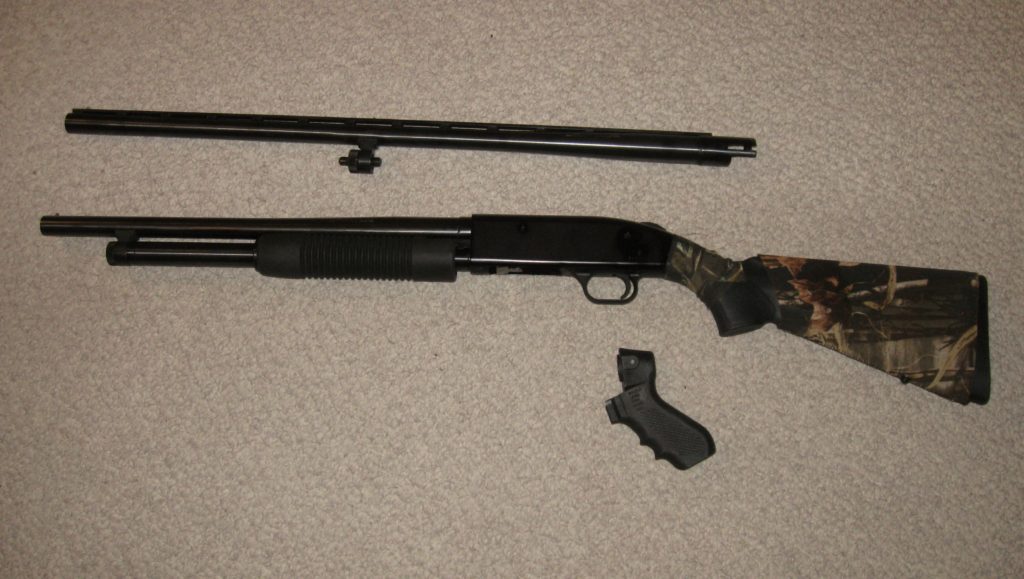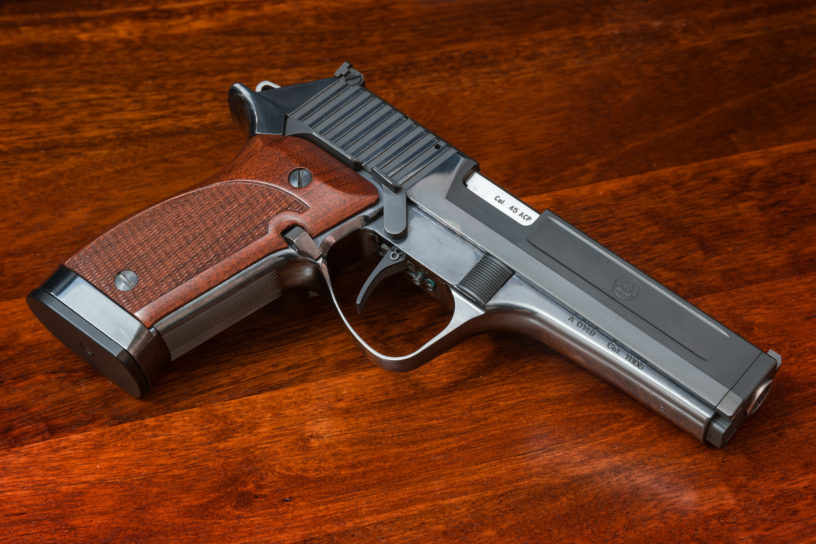And white supremacists, Aryan nationalists, and sundry other right-wing fringe lunatics
Unlike my neighbor up the road, who drives a compact SUV bearing a bumper sticker that reads, “45 ACP: When You Only Want to Shoot Once,” I do not particularly enjoy the notion of killing another person, and hope to go to my grave without having ever done so. And if you’re reading this now, on this commie-pinko web site, it’s probable you feel much the same way.
Good for you. But perhaps recent events have made you realize that a number of your fellow Americans, their heads full of outlandish anti-Semitic conspiracy theories spouted by shadowy “news” sites of the sort Rand Paul frequents, don’t share your antipathy toward the taking of human life. No: they’re armed to the teeth and consider you a threat to…who the hell knows? Their way of life, I guess: white, suburban, comfortable, privileged, and with plenty of disposable income with which to buy pricey tactical gear. That way of life.
Anyway, you may feel threatened by these people, and well you should. Furthermore, you may feel that you’d finally like to invest in some protection, in case the crackpots get even more organized and lethal than they already are. So what follows is a brief guide to selecting and operating firearms for the purpose of defending yourself from those who might wish you harm, specifically written for namby-pamby libtards like yourself.
First, a few rules:
- Treat every firearm as though it were loaded, until such time as you have personally inspected the weapon and ensured it has been “made safe,” which means to remove the magazine, empty the chamber, and for storage, to insert a safety flag into the chamber and/or attach a trigger lock.
- Do not point a firearm at another person unless you are absolutely certain you are willing and ready to pull the trigger.
- Keep the damned things locked in a safe when not in use.
Got it? Good. Now, I’m assuming that you have precious little experience handling firearms, that you’re probably a terrible shot, and that your primary goal is self-defense, so the firearms I discuss will cater to your situation. If you do have experience, and already know what you’re doing, then there’s no need to continue reading. This is for beginners, not you.
Shotguns
If I had to choose one gun to defend myself in my own home, it would be a shotgun. The reasons for this are threefold: first, you don’t have to be especially accurate, if you choose the right barrel and pellet size; second, smaller shotgun pellets lose energy fairly quickly, and thus don’t penetrate walls very well beyond a fairly short range; third, you can get a good, reliable shotgun for very little money.
Now, the worst-case scenario is that you’re awakened from a dead sleep, in the middle of the night, by the sound of a neo-Nazi attempting to enter your home. You’re groggy, you’re confused, it’s dark, and thus you’re unlikely to be able to aim a single-projectile weapon very accurately. Nor do you want to miss and send projectiles through walls and into your kids’ bedrooms. What you want is that close enough be good enough. A shotgun with a short barrel and a shot size between #4 and #8 gives you that.
You’ll also want to consider what gauge and action you want. Gauge is simply the diameter of the barrel, and thus the diameter of the shotgun shell; the most common, all-purpose gauge is 12, which is what I’ll recommend here. However, a 12-gauge does produce quite a bit of recoil, so if you’re smaller of frame or physically weak due to a life of reading Marxist poetry and drinking herbal tea, smaller gauges, such as 16 or 20, can also be quite effective, though the smaller diameter means you’ll be sending less shot into your target.
Action is the mechanism by which the hammer strikes the shell and explodes the powder within, sending the shot through the barrel. The simplest action is the “break-action,” used in single- and double-barrel shotguns. The “break” means you break open the gun at the base of the barrel, insert one or two shells, close the gun, and you’re ready to fire. It’s simple and reliable, but it means you have at most two pulls of the trigger before you have to reload, which is a dangerous delay in a self-defense situation.
Much better for our purposes is the “pump action” shotgun, which allows you to store several shells in a tube beneath the barrel, and pump them into the chamber after every shot. Pump shotguns are tried and tested, quite cheap, and have the added benefit of making an extremely intimidating noise when pumped; it’s possible the Proud Boy will cut and run at the sound alone, without you having to fire a single shot.

There are also auto-loading (semi-automatic) shotguns, which either use the force of the recoil from the previous shot to automatically chamber another shell, or use some sort of pressurized gas system to do the same. The downsides here are that auto-loaders tend to be more expensive than pumps, and can have problems with reliability as well.
So what to buy? A 12-gauge pump action shotgun with a short barrel and a box of #4 shells is a good start. I myself keep a Mossberg 500 in my safe, but you can’t go wrong with the venerable Remington 870 either. Browse the inventory of local dealers and see what fits your budget.
Pistols
My neighbor with the bumper sticker isn’t wrong. The .45 caliber ACP (Automatic Colt Pistol) round sends a big, fat, relatively slow-moving bullet with tremendous stopping power into your target. But because of its nearly half-inch diameter and somewhat pokey muzzle velocity, it loses energy fairly quickly, and thus doesn’t penetrate walls as far away as smaller, faster rounds will. The only problem with the .45 is that its quite a handful to shoot, by which I mean the recoil can be a bit much for limp-wristed SJWs.
That said, if you can handle it, the .45 is a great self-defense firearm. Many guns chambered for this round are based on the classic Colt 1911, which was the standard-issue military sidearm for many decades, and most .45 magazines hold around 8 rounds, which is good if that first shot doesn’t quite hit the mark.
The service branches phased out the .45 ACP in favor of the 9mm in the 1990s, and nearly all law-enforcement agencies use the 9mm as well—usually a Glock. As its name suggests, the 9mm round has a nine-millimeter diameter, and has advantages over the .45: being much smaller, you can put a lot more rounds into a standard magazine, and it produces a lot less recoil, which makes it easier to shoot accurate follow-up shots. However, those advantages can also be drawbacks. The 9mm bullet delivers a lot less energy into your target, despite being much faster out of the barrel, and 9mm rounds can penetrate walls much more than slower rounds.

There are plenty of other choices as well. In my safe I keep a Beretta chambered for .40 S&W (Smith & Wesson), which is only slightly smaller than the .45, but considerably faster. And extremely compact handguns, suitable for concealed carry in purses or pockets, are found in .38, .32, .22, and other calibers. As always, though, there’s a trade-off between lethality and convenience/comfort. Still, even the .22, most often used for varmints and can-plinking, is terribly deadly in skilled hands.
If you do decide on a pistol, make sure you practice, practice, practice. Unlike a shotgun, with its generous spread of projectiles, you have to be really accurate with a handgun. As with all guns, aim for the center mass of your target—the middle of the torso is your best bet. Spend plenty of time at the range, and in a real-world scenario, try to aim right below the “Camp Auschwitz” lettering on your assailant’s hoodie.
Rifles
For home defense, the rifle wouldn’t be my first choice, but that doesn’t mean you shouldn’t investigate the possibility. Obviously a hunting gun isn’t what we want here, as we’re not aiming at deer or coyote a hundred yards away. Instead, think small and maneuverable. The much-maligned AR-15 is the obvious choice, as it can be made short, light, and easy to aim. It can also be chambered for a variety of calibers, from the common .223/NATO 5.56mm to larger rounds such as the 6.8, and even bigger. The options are practically limitless.
There are plenty of other compact rifles out there as well, and if that’s what appeals to you, talk to the clerks at any of the gun shops in town and see what they have available. But remember that rifle bullets tend to travel much faster, in any caliber, than pistol rounds, and thus wall penetration will always be a problem. On the plus side, the semi-automatic action of the AR-15 and other compact rifles means your follow-up shots come quickly—just the thing when your state legislator-turned-white-grievance avenger brings his friends with him.
Add-ons
Nearly all of the weapons I’ve mentioned can be fitted with flashlights or lasers for better illumination of your target. And many of them have a variety of grip styles and sizes available; pick the one that feels best in your soft, girlish hands. And as mentioned above, get a stout safe or cabinet for storage. As a bonus, many safes have plenty of extra shelf space, and some even have built-in humidity regulators, which is great for storing your first editions and scrapbooks of pressed flowers.
That’s all for now. Questions? Leave them in the comments below. Let’s hope that war can be avoided, but if the shooting starts, it’s best to be prepared.





Doug Emerson
I love humor and a great message. This has both,
Thank you.